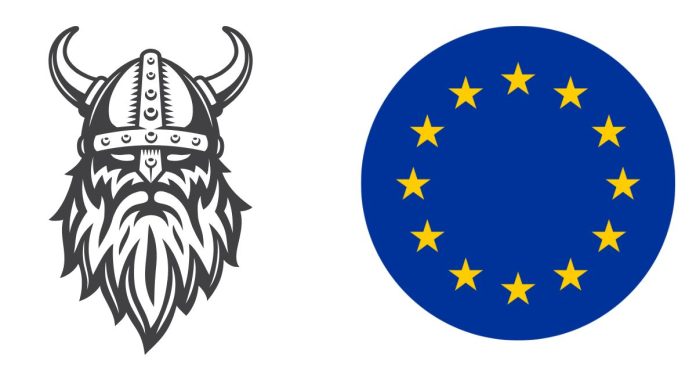What Region of Europe Do Vikings Come From?
When we think of Vikings, we often imagine fierce warriors, longships cutting through stormy seas, and epic sagas of exploration and conquest. But where exactly did these legendary figures come from? The answer lies in the northern part of Europe—specifically in the Scandinavian region.
The Heart of the Viking World: Scandinavia
The Vikings hailed from what is now known as Scandinavia, a region that includes the modern-day countries of Denmark, Norway, and Sweden. This area, located in the northernmost part of Europe, is characterized by rugged landscapes, fjords, vast forests, and a harsh climate. It’s no wonder that these resilient peoples turned to the seas for trade, exploration, and conquest.
Breaking It Down: Where Did the Vikings Come From?
While all Vikings were from Scandinavia, their influence and activities were spread across different parts of Europe and beyond. Let’s take a closer look at the three primary countries:
1. Norway
The Vikings from Norway were particularly renowned for their seafaring skills and adventurous spirit. Norwegian Vikings were some of the first to explore the coasts of the British Isles, Iceland, Greenland, and even North America (with Leif Erikson famously landing in what is now Newfoundland, Canada). They also established settlements in Iceland and played a key role in shaping early Norse society.
2. Denmark
The Vikings from Denmark were known for their aggressive raids and invasions, especially in the British Isles and parts of Europe. They established a significant presence in England, where the Danelaw—a region under Viking control—was created. Danish Vikings also made their mark in France, notably with the founding of Normandy (named after the Norsemen who settled there).
3. Sweden
Vikings from Sweden were often more focused on eastward exploration. They traveled along the Volga River, through what is now Russia, and even reached the Byzantine Empire and the Middle East. Swedish Vikings were important traders, bringing goods like furs, slaves, and amber to distant lands, and they were influential in the establishment of trading routes and early cities in Eastern Europe.
The Viking Age: A Brief Overview
The Viking Age is generally considered to have lasted from the late 8th century to the 11th century. During this period, Viking warriors, traders, and explorers ventured far beyond their homelands, leaving a profound legacy in the regions they encountered.
- Raids and Invasions: Viking raids began in the late 700s, with famous attacks such as the 793 raid on the Lindisfarne Monastery in England. Over the centuries, Viking raids spread across Europe, reaching places like France, Ireland, Scotland, and even parts of Spain and Italy.
- Exploration and Trade: Beyond raiding, Vikings were also skilled traders and navigators. They established extensive trade networks, exchanging goods such as spices, textiles, and precious metals. Vikings traveled as far as North America, the Middle East, and Central Asia, leaving behind evidence of their far-reaching influence.
- Settlements and Kingdoms: Vikings didn’t just raid—they settled in the lands they conquered. They founded cities, established kingdoms, and integrated with local populations. In England, for example, the Viking Kingdom of York became a major center of power.
Why Were the Vikings So Successful?
The Viking peoples’ success as warriors and explorers can be attributed to several factors:
- Superior Shipbuilding: The Vikings’ longships were fast, flexible, and capable of navigating both open seas and shallow rivers, making them ideal for raids and exploration.
- Skilled Navigators: The Vikings were exceptional sailors, using the stars, the sun, and landmarks to navigate vast distances across the open sea.
- Warrior Culture: The Vikings valued strength, bravery, and honor. Their warrior culture, combined with effective battle strategies and tactics, made them formidable opponents in battle.
- Adaptability: Vikings were not just raiders but also traders, settlers, and rulers. Their ability to adapt to different environments and integrate with local cultures helped them thrive across much of Europe.
Vikings’ Legacy Today
Though the Viking Age came to an end around the 11th century, the impact of the Vikings can still be felt today. Their legacy is seen in language (many English words have Viking roots), place names, and even genetic traces in regions they once settled. Modern-day Scandinavia—Denmark, Norway, and Sweden—continues to celebrate its Viking heritage, with numerous museums, festivals, and historical sites dedicated to preserving Viking history.
In Conclusion
The Vikings, those legendary explorers and warriors, came from the Scandinavian region of Europe—specifically from what is now Denmark, Norway, and Sweden. From their raids and conquests to their far-reaching explorations and trading ventures, the Vikings left an indelible mark on European history and beyond. Today, their influence is celebrated and remembered as an essential part of the rich cultural tapestry of Northern Europe.
Related posts:
- What does ringing in the ears mean spiritually?
- What Colors Do Blue and Green Make?
- How Long Does Raw Chicken Really Last in the Fridge?
- What are some amazing and memorable Valentine’s Day ideas that will leave a lasting impression?
- What is the definition of ‘friends with benefits?
- What is the difference between a bachelor’s and a degree?


